(15) And from the day on which you bring the omer of elevation offering—the day after the sabbath—you shall count off seven weeks. They must be complete: (16) you must count until the day after the seventh week—fifty days; then you shall bring an offering of new grain to the Lord.
~ Omer = sheaf
~ What are two possibilities for the beginning of counting the Omer in this source?
Passover: wheat harvest
Shavuot: barley harvest
50 days between
(ג) כֵּיצַד הָיוּ עוֹשִׂים. שְׁלוּחֵי בֵית דִּין יוֹצְאִים מֵעֶרֶב יוֹם טוֹב, וְעוֹשִׂים אוֹתוֹ כְרִיכוֹת בִּמְחֻבָּר לַקַּרְקַע, כְּדֵי שֶׁיְּהֵא נוֹחַ לִקְצֹר. וְכָל הָעֲיָרוֹת הַסְּמוּכוֹת לְשָׁם, מִתְכַּנְּסוֹת לְשָׁם, כְּדֵי שֶׁיְּהֵא נִקְצָר בְּעֵסֶק גָּדוֹל. כֵּיוָן שֶׁחֲשֵׁכָה, אוֹמֵר לָהֶם, בָּא הַשָּׁמֶשׁ, אוֹמְרִים, הֵן. בָּא הַשָּׁמֶשׁ, אוֹמְרִים הֵן. מַגָּל זוֹ, אוֹמְרִים הֵן. מַגָּל זוֹ, אוֹמְרִים הֵן. קֻפָּה זוֹ, אוֹמְרִים הֵן. קֻפָּה זוֹ, אוֹמְרִים הֵן. בְּשַׁבָּת אוֹמֵר לָהֶם, שַׁבָּת זוֹ, אוֹמְרִים הֵן. שַׁבָּת זוֹ, אוֹמְרִים הֵן. אֶקְצֹר, וְהֵם אוֹמְרִים לוֹ קְצֹר. אֶקְצֹר, וְהֵם אוֹמְרִים לוֹ קְצֹר. שָׁלשׁ פְּעָמִים עַל כָּל דָּבָר וְדָבָר, וְהֵם אוֹמְרִים לוֹ הֵן, הֵן, הֵן. וְכָל כָּךְ לָמָּה. מִפְּנֵי הַבַּיְתוֹסִים, שֶׁהָיוּ אוֹמְרִים, אֵין קְצִירַת הָעֹמֶר בְּמוֹצָאֵי יוֹם טוֹב:
(3) How would they perform the rite of the harvest of the omer? Emissaries of the court would emerge on the eve of the festival of Passover and fashion the stalks of barley into sheaves while the stalks were still attached to the ground, so that it would be convenient to reap them. The residents of all the towns adjacent to the site of the harvest would assemble there, so that it would be harvested with great fanfare. Once it grew dark, the court emissary says to those assembled: Did the sun set? The assembly says in response: Yes. The emissary repeats: Did the sun set? They again say: Yes. The court emissary next says to those assembled: Shall I reap the sheaves with this sickle? The assembly says in response: Yes. The emissary repeats: With this sickle? The assembly says: Yes. The court emissary then says to those assembled: Shall I place the gathered sheaves in this basket? The assembly says in response: Yes. The emissary repeats: In this basket? The assembly says: Yes. If the sixteenth of Nisan occurs on Shabbat, the court emissary says to the assembled: Shall I cut the sheaves on this Shabbat? The assembly says in response: Yes. The emissary repeats: On this Shabbat? The assembly says: Yes. The court emissary says to those assembled: Shall I cut the sheaves? And they say to him in response: Cut. The emissary repeats: Shall I cut the sheaves? And they say to him: Cut. The emissary asks three times with regard to each and every matter, and the assembly says to him: Yes, yes, yes. The mishna asks: Why do I need those involved to publicize each stage of the rite to that extent? The mishna answers: It is due to the Boethusians, as they deny the validity of the Oral Law and would say: There is no harvest of the omer at the conclusion of the first Festival day of Passover unless it occurs at the conclusion of Shabbat. The publicity was to underscore that the sixteenth of Nisan was the proper time for the omer harvest.
~ The Boethusians were a group of Jews either similar to or identical with the Sadducees. The Sadducees held that the omer was harvested on the Sabbath that followed the first day of the festival, and not on the evening after the first day of the festival.
~ Why do you think the rabbis did such a big production of the harvesting of the omer every night?
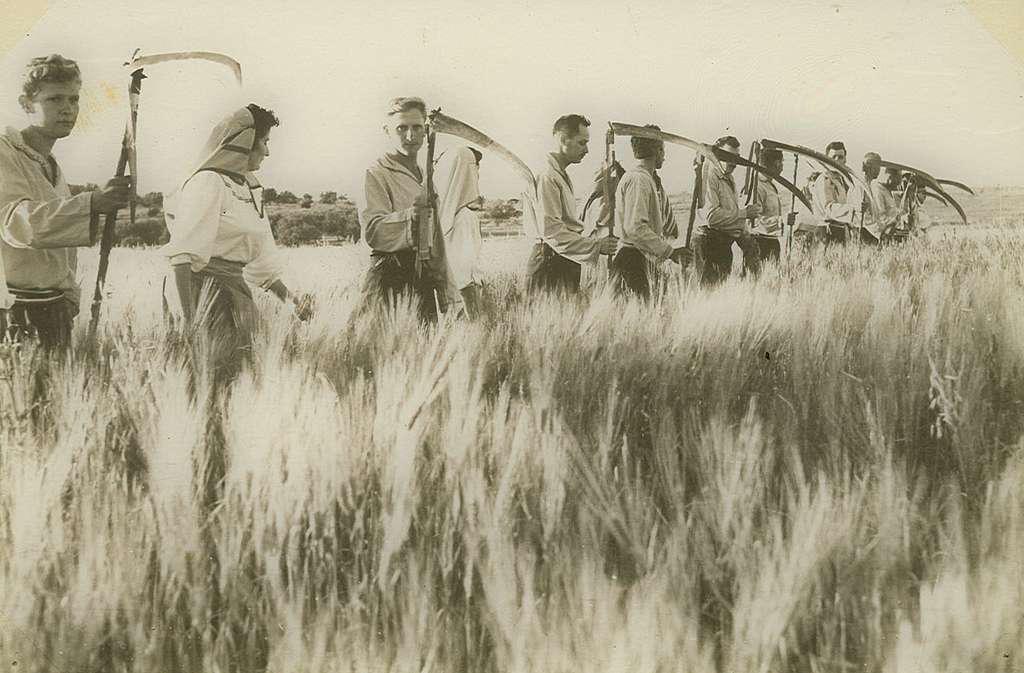
Kibbutz Ramat Yochanan, 1945~
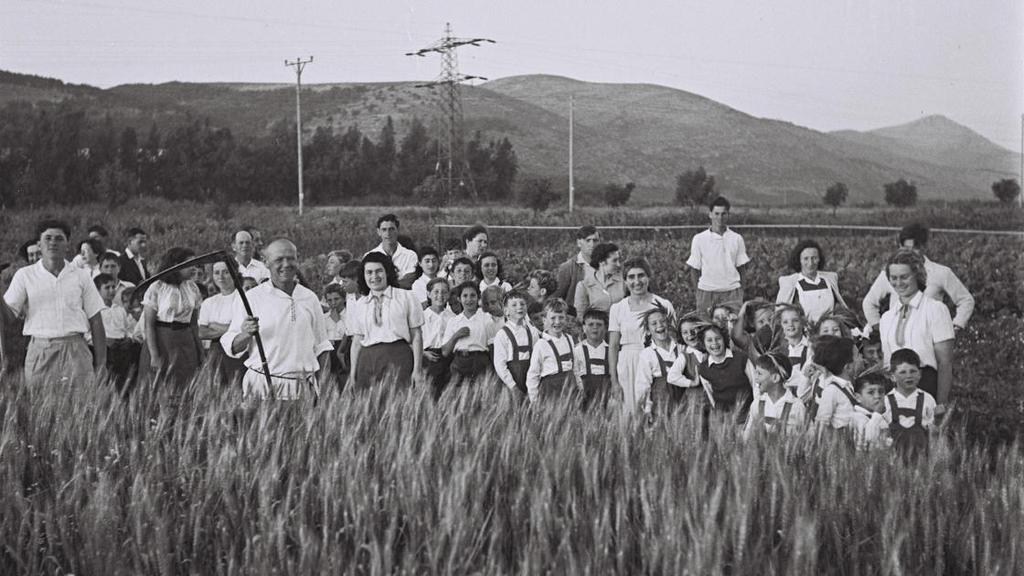
Kibbutz Ginegar, 1947- Omer Festival
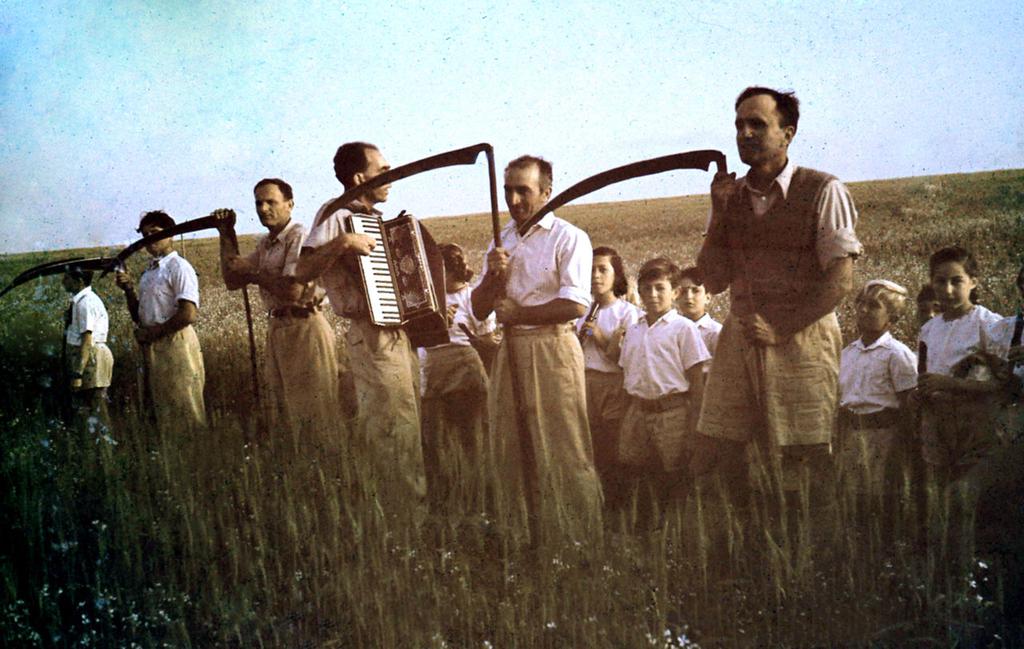
Kibbutz Givat Chayim, 1950 - members harvesting the omer
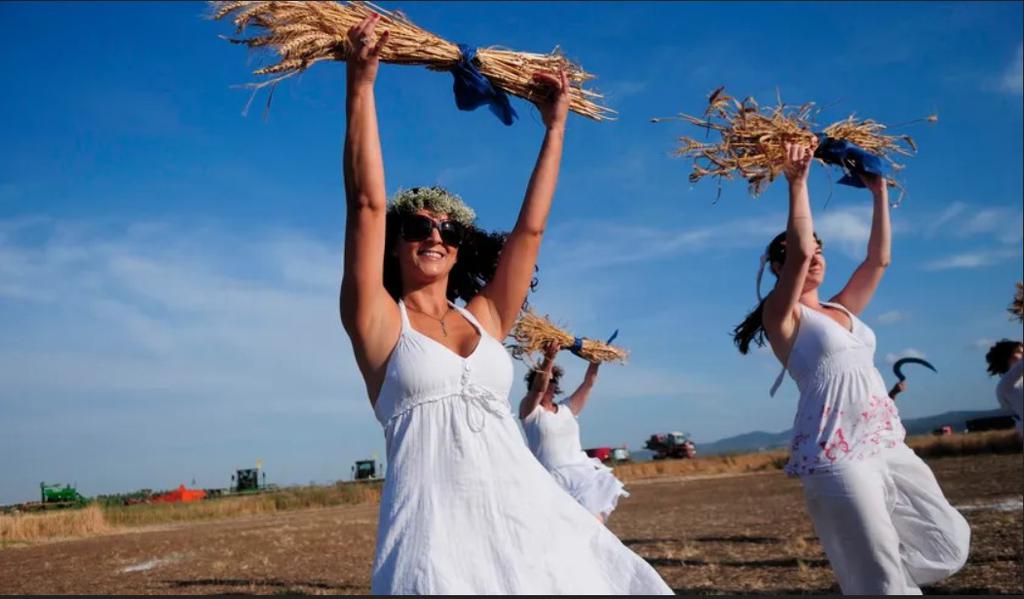
Jezreel Valley, 2013, Shavuot celebration
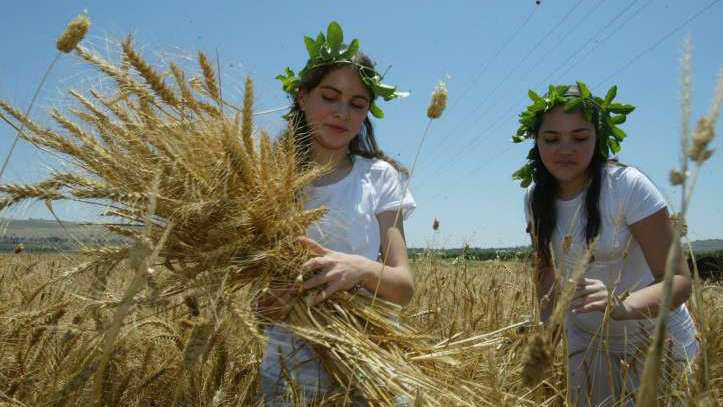
Kibbutz Ayelet HaShachar, 2023
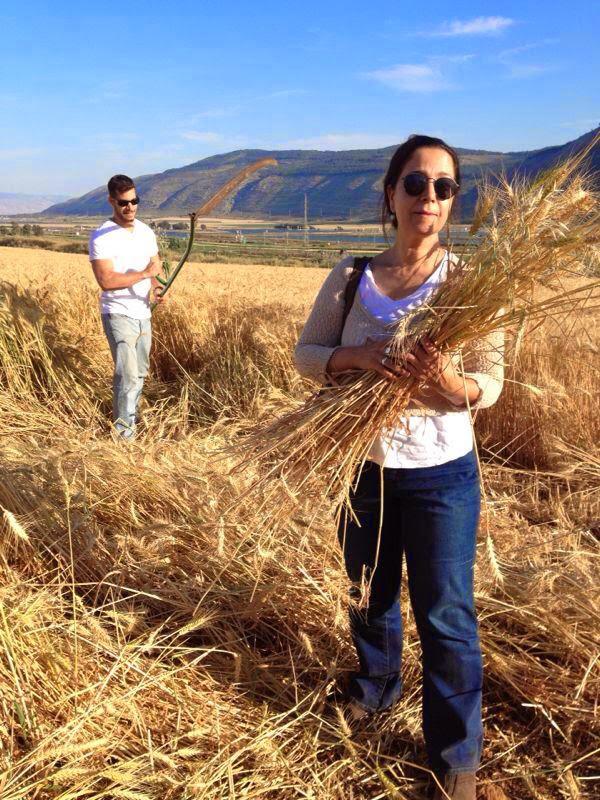
In Israel kibbutzim do it as part of the general yearly cycle. You can find many such videos on YouTube
(יב) קְצָרוּהוּ וּנְתָנוּהוּ בְּקֻפּוֹת וֶהֱבִיאוּהוּ לָעֲזָרָה וַחֲבָטוּהוּ. וְזוֹרִין וּבוֹרְרִין. וְלוֹקְחִין אֶת הַשְּׂעוֹרִין וּמְהַבְהֲבִין אוֹתוֹ בָּאוּר. בְּאַבּוּב מְנֻקָּב. כְּדֵי שֶׁיִּהְיֶה הָאֵשׁ שׁוֹלֵט בְּכֻלָּן שֶׁנֶּאֱמַר (ויקרא ב יד) "אָבִיב קָלוּי בָּאֵשׁ גֶּרֶשׂ כַּרְמֶל". מִפִּי הַשְּׁמוּעָה לָמְדוּ שֶׁאֵינוֹ מְדַבֵּר אֶלָּא בְּמִנְחַת הָעֹמֶר בִּלְבַד. וְאַחַר שֶׁקּוֹלִין אוֹתוֹ שׁוֹטְחִין אוֹתוֹ בָּעֲזָרָה וְהָרוּחַ מְנַשֶּׁבֶת בּוֹ. וְנוֹתְנִין אוֹתוֹ לְרֵחַיִם שֶׁל גָּרוֹסוֹת וְטוֹחֲנִין אֶת הַשָּׁלֹשׁ סְאִין וּמוֹצִיאִין מִן הַכּל עִשָּׂרוֹן שֶׁהוּא מְנֻפֶּה בִּשְׁלֹשׁ עֶשְׂרֵה נָפָה. וְהַשְּׁאָר נִפְדֶּה וְנֶאֱכָל לְכָל אָדָם. וְחַיָּב בְּחַלָּה וּפָטוּר מִן הַמַּעַשְׂרוֹת כְּמוֹ שֶׁבֵּאַרְנוּ....
(12) They reaped [the barley]; [then] they placed it in the baskets, and brought it to the Temple Courtyard. [There] they beat it, winnowed it, and selected [the kernels]. The barley [kernels] were taken and roasted over the fire in a cylinder with holes so that the fire would reach it in its entirety, as [Leviticus 2:14] states: "From ripe ears, roasted over fire, ground from fresh kernels." According to the Oral Tradition, we learned that the verse is speaking only about the omer meal-offering. After it is roasted, it is spread out in the Temple Courtyard and the wind wafts through it. It is then taken to a mill for kernels and ground [to produce] three se'ah.(~8.3 liters ) From that quantity, an isaron (An isaron is one tenth of an ephah and an ephah is three se'ah,~2.4 liters) is taken out after it has been sifted with thirteen sifters. The remainder is redeemed and [afterwards] may be eaten by any person. Challah must be separated from [that grain], but it is exempt from the tithes, as we explained...
(ב) רוב הפוסקים הסכימו דספירה דבזמן הזה אינו אלא דרבנן, שהרי עכשיו ליכא עומר. והספירה שבתורה הוא למנות מן קרבן עומר עד קרבן של שתי הלחם, ועכשיו לא שייך זה (ר"ן שם). וכן משמע במנחות (סו א), שאומר אמימר: מני יומי ולא מני שבוע, אמר זכר למקדש הוא. ופירש רש"י: האי מניינא דהשתא לאו חובה הוא, דהא ליכא עומר. אלא זכר למקדש… עד כאן לשונו. ובהגדה אמרו: בשעה שאמר להם משה "תעבדון את אלקים על ההר הזה", אמרו לו ישראל: "משה רבינו! אימתי עבודה זו? אמר להם: "לסוף חמישים יום." והיו מונין כל אחד ואחד לעצמו, מכאן קבעו חכמים לספירת העומר. כלומר: בזמן הזה שאין אנו מביאין קרבן ולא עומר, אלא מחשבין חמישים יום לשמחת התורה כמו שמנו ישראל באותו זמן. וזהו דרך דרש, דעיקרא דמילתא הוא שזהו זכר למקדש. אבל מכל מקום כל זה מוכיח שאין הספירה עכשיו אלא מדרבנן (ר"ן שם).
The majority of the poskim agree that the counting of the Omer nowadays is only a rabbinic ordinance, since nowadays there is no Omer. and the counting mandated in the Torah is of the Omer offering until the offering of the two loaves of bread, and now this does not happen. And in Menachot 66a Ameimar says: can one counts days and not count weeks? It is for remembrance of the Temple. And Rashi explains: the counting we do today is not an obligation, as there is no omer. It is a reminder of the temple... until here. And in the Aggadah they said: at the moment that Moshe said 'you will serve God on this mountain', Israel asked: "Moshe our Teacher! When is this service happening?" He said: "at the end of fifty days." And each and every person counted for themselves, and from here the sages fixed the counting of the omer. That is to say: nowadays that we do not bring the offering of the omer, we count fifty days to Simchat Torah (the writer means Shavuot), as Israel counted then. And this is the way of midrash, since the essence of the thing is the reminder of the temple. Anyhow, all this confirms that the counting nowadays is only derabanan (rabbinic force).
~ What are the reasons we still count the omer nowadays, according to R. Yechiel Michel Epstein, even outside of the land?
(א) בָּרוּךְ אַתָּה ה' אֱלֹקֵינוּ מֶלֶךְ הָעוֹלָם, אֲשֶׁר קִדְּשָׁנוּ בְּמִצְוֹתָיו וְצִוָּנוּ עַל סְפִירַת הָעֹמֶר.
(ג) הַיּוֹם....
Bountiful are You, Eternal One our God, Sovereign of the Universe, who has made us holy with commandments and commanded us regarding the counting of the Omer.
Today is....days, which makes .... days and...weeks of the Omer.
Just a reminder:
33 = ל"ג
(א) נוֹהֲגִים שֶׁלֹּא לִשָּׂא אִשָּׁה בֵּין פֶּסַח לַעֲצֶרֶת עַד ל''ג לָעֹמֶר, מִפְּנֵי שֶׁבְּאוֹתוֹ זְמַן מֵתוּ תַּלְמִידֵי רַבִּי עֲקִיבָא; אֲבָל לְאָרֵס וּלְקַדֵּשׁ, שַׁפִּיר דָּמִי, וְנִשּׂוּאִין נָמֵי, מִי שֶׁקָּפַץ וְכָנַס אֵין עוֹנְשִׁין אוֹתוֹ. הַגָּה: מִיהוּ מִלַּ''ג בָּעֹמֶר וָאֵילָךְ הַכֹּל שָׁרֵי (אַבּוּדַרְהַם וּבֵית יוֹסֵף וּמִנְהָגִים).
(ב) נוֹהֲגִים שֶׁלֹּא לְהִסְתַּפֵּר עַד ל''ג לָעֹמֶר, שֶׁאוֹמְרִים שֶׁאָז פָּסְקוּ מִלָּמוּת.
(1) It is customary not to get married between Pesach and Shavuot, until Lag BaOmer (the 33rd day), because during that time, the students of Rabbi Akiva died. However, to do "erusin" and "kiddushin" (engagement and betrothal) is fine. And even for "nisuin" (marriage), if someone did so, we do not punish him. Rema: however, from Lag Ba'Omer onwards, all this is permitted (Abudraham, Beit Yosef & Minhagim).
(2) It is customary not to cut one's hair until Lag BaOmer, since it is said that that is when they stopped dying.
~ What does the Shulchan Aruch say about Lag BaOmer?
רַבִּי עֲקִיבָא אוֹמֵר: לָמַד תּוֹרָה בְּיַלְדוּתוֹ — יִלְמוֹד תּוֹרָה בְּזִקְנוּתוֹ. הָיוּ לוֹ תַּלְמִידִים בְּיַלְדוּתוֹ — יִהְיוּ לוֹ תַּלְמִידִים בְּזִקְנוּתוֹ, שֶׁנֶּאֱמַר: ״בַּבֹּקֶר זְרַע אֶת זַרְעֶךָ וְגוֹ׳״. אָמְרוּ: שְׁנֵים עָשָׂר אָלֶף זוּגִים תַּלְמִידִים הָיוּ לוֹ לְרַבִּי עֲקִיבָא מִגְּבָת עַד אַנְטִיפְרַס, וְכוּלָּן מֵתוּ בְּפֶרֶק אֶחָד, מִפְּנֵי שֶׁלֹּא נָהֲגוּ כָּבוֹד זֶה לָזֶה. וְהָיָה הָעוֹלָם שָׁמֵם, עַד שֶׁבָּא רַבִּי עֲקִיבָא אֵצֶל רַבּוֹתֵינוּ שֶׁבַּדָּרוֹם וּשְׁנָאָהּ לָהֶם: רַבִּי מֵאִיר, וְרַבִּי יְהוּדָה, וְרַבִּי יוֹסֵי, וְרַבִּי שִׁמְעוֹן, וְרַבִּי אֶלְעָזָר בֶּן שַׁמּוּעַ, וְהֵם הֵם הֶעֱמִידוּ תּוֹרָה אוֹתָהּ שָׁעָה. תָּנָא, כּוּלָּם מֵתוּ מִפֶּסַח וְעַד עֲצֶרֶת. אָמַר רַב חָמָא בַּר אַבָּא וְאִיתֵּימָא רַבִּי חִיָּיא בַּר אָבִין: כּוּלָּם מֵתוּ מִיתָה רָעָה. מַאי הִיא? אָמַר רַב נַחְמָן: אַסְכָּרָה.
Rabbi Akiva says: If one studied Torah in his youth he should study more Torah in his old age; if he had students in his youth he should have additional students in his old age, as it is stated: “Sow your seed in the morning, and don’t hold back your hand in the evening, since you don’t know which is going to succeed, the one or the other, or if both are equally good” (Eccl. 11:6)
They said by way of example that Rabbi Akiva had twelve thousand pairs of students in an area of land that stretched from Gevat to Antipatris in Judea, and they all died in one period of time, because they did not treat each other with respect.
And the world was desolate of Torah until Rabbi Akiva came to our Rabbis in the South and taught his Torah to them. This second group of disciples consisted of Rabbi Meir, Rabbi Yehuda, Rabbi Yosei, Rabbi Shimon bar Yochai, and Rabbi Elazar ben Shamua. And these are the very ones who upheld the study of Torah at that time.
With regard to the twelve thousand pairs of Rabbi Akiva’s students, the Gemara adds: It is taught that all of them died in the period from Passover until Shavuot. Rav Ḥama bar Abba said, and some say it was Rabbi Ḥiyya bar Avin: They all died a bad death. The Gemara inquires: What is it that is called a bad death? Rav Naḥman said: Diphtheria.
~ Why did the students die, according to a simple reading of the Talmud?
תָּנוּ רַבָּנַן: אַסְכָּרָה בָּאָה לְעוֹלָם עַל הַמַּעֲשֵׂר. רַבִּי אֶלְעָזָר בְּרַבִּי יוֹסֵי אוֹמֵר: עַל לָשׁוֹן הָרָע.
The Sages taught: Askara (diphtheria) comes to the world as punishment for neglecting to separate food meant for tithes. Rabbi Elazar, son of Rabbi Yosei, says: Askara comes as punishment for slander.
~ If one accepts the vision that disease comes as punishment, why is diphteria here, according to this piece?
~ What is the lack of respect of Rabbi Akiva's students?
~ What basic Jewish values are behind these two sources?
אָמַר לָהֶם הָרִאשׁוֹנִים לֹא מֵתוּ אֶלָּא מִפְּנֵי שֶׁהָיְתָה עֵינֵיהֶם צָרָה בַּתּוֹרָה זֶה לָזֶה, אַתֶּם לֹא תִהְיוּ כֵן, מִיָּד עָמְדוּ וּמִלְּאוּ כָּל אֶרֶץ יִשְׂרָאֵל תּוֹרָה.
[Rabbi Akiva said to his new students:] the first students died because their eyes were narrow in the Torah they shared with each other. Do not be like this. They immediately stood up and filled the land of Israel with Torah.
Context: Kohelet Rabbah is a book of midrashic interpretation on the Biblical Book of Ecclesiastes (a.k.a. Kohelet). It was written around 800 CE, give or take 100 years. It takes the verse in Kohelet about sowing seeds in the morning (11:6), talks about the Gemara's interpretations of this (Yevamot 62b), and then shares more about the Rabbi Akiba story in the Gemara.
~ What might it mean when it says "their eyes were narrow in the Torah they shared with each other"?
עץ יוסף, עין יעקב, יבמות סב ב מפני ושם במדרש איתא מפני שהיתה עיניהם צרה אלו לאלו כלומר שהיו שונאים זה לזה ולא היו רוצים לההנות זה לזה בלמוד וכאן פירש שלא נהגו כבוד כו' שלא חש כל אחד מהם על כבוד התורה של חברו דאין כבוד אלא תורה
Etz Yosef on Ein Yaakov Yevamot 62b
And as it is brought in the Midrash (Kohelet Rabbah), "because their eyes were narrow with the Torah they shared with each other." This it to say, that they hated one another, and didn't want to enjoy each other's company in Torah learning, and they weren't respectful with one another, etc., as they were not careful to be respectful of the Torah of their fellow, as there is no such thing as honor except in regards to Torah.
Context: This is from the commentary Etz Yosef on the collection Ein Yaakov. The Ein Yaakov is a collection of all the "aggadah" (stories) in the Talmud. It was put together by Jacob ibn Habib in the 1500s.
~ The Etz Yosef is a commentary on the parts of the Ein Yaakov which also appear in Midrash Rabba. It was written by Enoch Zundel ben Joseph in 1845. Because the story of Rabbi Akiva's students is both in the Talmud (Yevamot 62b) and Kohelet Rabba (11:6:1), it is included in the Etz Yosef.
~ How does he explain the expression?
~ How is this text relevant to our lives today?
תַּנֵּי רִבִּי שִׁמְעוֹן בֶּן יוֹחַי. עֲקִיבָה רִבִּי הָיָה דוֹרֵשׁ דָּרַ֨ךְ כּוֹכָ֝ב מִֽיַּֽעֲקֹ֗ב. דָּרַךְ כּוֹזִבָּא מִיַּעֲקֹב. רִבִּי עֲקִיבָה כַּד הֲוָה חֲמִי בַּר כּוֹזִבָּה הֲוָה אֲמַר. דֵּין הוּא מַלְכָּא מְשִׁיחָא. אָמַר לֵיהּ רִבִּי יוֹחָנָן בַּר תּוֹרְתָא. עֲקִיבָה. יַעֲלוּ עֲשָׂבִים בִּלְחָיֵיךָ (וְאַדַּיִין) [וְעַדַּיִין] בֶּן דָּוִד [לֹא] יָבֹא.
Rebbi Simeon ben Yohai stated: Akiba my teacher used to preach, there appeared a star out of Jacob there appeared Koziba out of Jacob. When Rebbi Akiba saw Bar Koziba he said, “this is King Messiah”. Rebbi Yochanan ben Torta said to him, “Akiba! Grass will grow from your jaws and still David’s son (still has to) [will not have] come.”
This is about the Bar-Kochba Revolt, which ended with the fall of Beitar in 135 CE. The part in parentheses and brackets are 2 different versions of the text.
~ What does R. Akiva initially think of Bar Kochba?
~ Koziba means "lie". What was R. Akiva's understanding after 135 CE?
~ Note who is bringing this teaching. From which group of students is he?
Incidentally, the “Seder” in B’nai Brak that we read about in the Haggadah was probably more revolutionary than it seems from a surface read.
Given how Rabbi Akiva initially felt about Bar-Kochba, and given that the Talmud sometimes speaks cryptically, how might his students have died?
(ט) ומסר ר' עקיבא את עצמו [להריגה] אחר שנפטר ר' יוסי בן קיסמא. ונהרג ר' חנינא בן תרדיון ונתמעטה החכמה [אחריהם]. והעמיד [רבי עקיבא] תלמידים הרבה והוה שמדא על התלמידים של ר' עקיבא ...
R' Akiva gave himself over to execution after R' Yosi ben Kisma died. R' Chanina ben Tradiyon was also killed and wisdom diminished after they passed. R' Akiva raised up many students, but a religious persecution waged against his students...
~ This is from a responsa written by Rav Sherira Gaon, the head of a Babylonian academy, to a query from a Tunisian community in 986. The question was about how the Mishnah and Babylonian Talmud came to be. The response is the first use of a historical lens on the Talmud.
~What does Rav Sherira Gaon’s explanation for the demise of Rabbi Akiba’s students support in our understanding of why they might have died?
אמרו על ר' עקיבא ששנים עשר אלף זוגות תלמידים היו לו וכלן מתו בפרק אחד על שלא נהגו כבוד זה לזה והיה העולם שמם בלא תורה עד שבא לו אצל רבותינו שבדרום ושנה להם לר' מאיר ור' שמעון ור' יהודה ור' יוסי ור' אלעזר בן שמוע והם הם העמידו את השעה ותלמידים אלו הוזכר כאן שכלם מתו מפסח ועד עצרת וקבלה ביד הגאונים שביום ל"ג בעומר פסקה המיתה ונוהגים מתוך כך שלא להתענות בו וכן נוהגים מתוך כך שלא לישא אשה מפסח עד אותו זמן:
Meiri, Tractate Yevamot 62b
There is a received tradition from the Geonim that on the 33rd day of the Omer, the deaths (of the students of R. Akivah) stopped...and we also have the custom not to get married from Pesach until this time
Other possible explanations for why Lag BaOmer became a day of celebration include that there was a lull in the fighting during the Bar-Kochba rebellion, or that possibly they captured Jerusalem on this day in 132 CE, or that Rabbi Akiba “ordained” the 5 rabbis on Lag BaOmer, thus ensuring that Jewish tradition would continue to be taught.
In this baraita Rabbi Yehuda is described as head of the speakers in every place. The Gemara asks: And why did they call him head of the speakers in every place? The Gemara relates that this resulted due to an incident that took place when Rabbi Yehuda and Rabbi Yosei and Rabbi Shimon were sitting, and Yehuda, son of converts, sat beside them. Rabbi Yehuda opened and said: How pleasant are the actions of this nation, the Romans, as they established marketplaces, established bridges, and established bathhouses. Rabbi Yosei was silent. Rabbi Shimon ben Yoḥai responded and said: Everything that they established, they established only for their own purposes. They established marketplaces, to place prostitutes in them; bathhouses, to pamper themselves; and bridges, to collect taxes from all who pass over them. Yehuda, son of converts, went and related their statements to his household, and those statements continued to spread until they were heard by the monarchy. They ruled and said: Yehuda, who elevated the Roman regime, shall be elevated and appointed as head of the Sages, the head of the speakers in every place. Yosei, who remained silent, shall be exiled from his home in Judea as punishment, and sent to the city of Tzippori in the Galilee. And Shimon, who denounced the government, shall be killed. Rabbi Shimon bar Yoḥai and his son, Rabbi Elazar, went and hid in the study hall. Every day Rabbi Shimon’s wife would bring them bread and a jug of water and they would eat. When the decree intensified, Rabbi Shimon said to his son: Women are easily impressionable and, therefore, there is room for concern lest the authorities torture her and she reveal our whereabouts. They went and they hid in a cave. A miracle occurred and a carob tree was created for them as well as a spring of water. They would remove their clothes and sit covered in sand up to their necks. They would study Torah all day in that manner. At the time of prayer, they would dress, cover themselves, and pray, and they would again remove their clothes afterward so that they would not become tattered. They sat in the cave for twelve years. Elijah the Prophet came and stood at the entrance to the cave and said: Who will inform bar Yoḥai that the emperor died and his decree has been abrogated? They emerged from the cave, and saw people who were plowing and sowing. Rabbi Shimon bar Yoḥai said: These people abandon eternal life of Torah study and engage in temporal life for their own sustenance. The Gemara relates that every place that Rabbi Shimon and his son Rabbi Elazar directed their eyes was immediately burned. A Divine Voice emerged and said to them: Did you emerge from the cave in order to destroy My world? Return to your cave. They again went and sat there for twelve months. They said: The judgment of the wicked in Gehenna lasts for twelve months. Surely their sin was atoned in that time. A Divine Voice emerged and said to them: Emerge from your cave. They emerged. Everywhere that Rabbi Elazar would strike, Rabbi Shimon would heal. Rabbi Shimon said to Rabbi Elazar: My son, you and I suffice for the entire world, as the two of us are engaged in the proper study of Torah. As the sun was setting on Shabbat eve, they saw an elderly man who was holding two bundles of myrtle branches and running at twilight. They said to him: Why do you have these? He said to them: In honor of Shabbat. They said to him: And let one suffice. He answered them: One is corresponding to: “Remember the Shabbat day, to keep it holy” (Exodus 20:8), and one is corresponding to: “Observe the Shabbat day, to keep it holy” (Deuteronomy 5:12). Rabbi Shimon said to his son: See how beloved the mitzvot are to Israel. Their minds were put at ease and they were no longer as upset that people were not engaged in Torah study.
~ Why do Shimon Bar Yochai and his son hide? For how long?
~ Why are they sent back to the cave a second time?
~ This is the end of the story.
~ How does it end?
Zohar Idra Zuta Devarim, Haazinu; Death of Rabbi Shimon Bar Yochai:
On the day that Rabbi Shimon bar Yochai was to leave this world he arranged his affairs. His friends came to his room and he said to them “now is a time of favour. I can now reveal to you holy things that haven’t been revealed until now”…. All that day the fire never left the room, and there was nobody who was able to approach because it was impossible. The light and the fire were surrounding him.
אָתוּ טְרִיקִין, וּמָארֵי תְּרִיסִין דִּכְפַר צִפֳּרִי וְטַרְדָאן בְּהוּ (ס''א דצפרי וטרדיא והוו) בְּנֵי מְרוֹנְיָא, צַוְוחִין בִּקְטִירִין, דְּחָשִׁיבוּ דְּלָא יִתְקְבַּר תַּמָּן. בָּתַר דְּנָפַק פּוּרְיָיא, הֲוָה סָלִיק בַּאֲוִירָא. וְאֶשָּׁא הֲוָה לָהִיט קַמֵּיהּ, שָׁמְעוּ קָלָא, עוּלוּ וְאָתוּ, וְאִתְכְּנָשׁוּ לְהִילּוּלָא דְּרִבִּי שִׁמְעוֹן.
Truculent stingers and shield-bearing warriors from Sepphoris came and beset them. The people of Meron banded together and shouted, for they feared he would not be buried there. After the bed emerged from the house, it rose into the air; fire blazed before it. They heard a voice: “Come and gather! Assemble for the celebration of Rabbi Shim'on!"
Zohar: The Book of Enlightenment, Translated by Daniel Matt, p. 188
~ How does the story continue, according to the Zohar?

This is Shimon bar Yochai’s grave on Mt. Meron in Northern Israel, where people light bonfires throughout the night on his yahrtzeit (anniversary of his death) - The 18th of Iyar, which is Lag BaOmer.
One particular custom practiced on the day of Lag B'Omer is unique: Children go to parks and fields to play with bows and arrows. What is the reason for this peculiar custom? One well-known explanation has to do with the fact that during Rabbi Shimon's lifetime, no rainbow ever appeared in the sky. This is profoundly significant, because Genesis relates that the rainbow represented G-d's covenant never to destroy the world again even if the human race would degenerate to its status prior to the Flood. But as long as Rabbi Shimon was alive, his merit and piety alone were enough to ensure that G-d would not regret His creation, with no need for the rainbow. On the day of Rabbi Shimon's passing, however, the world was in need of the rainbow. Thus, each year on that day we recall this man's greatness by playing with the bow.

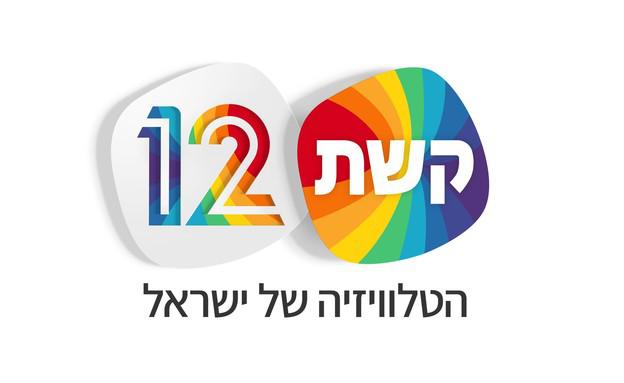
Context: “B’nai Yissachar” was written by Rabbi Tzvi Elimech Spira around 1830. It’s organized by month of the year, and it talks about mystical aspects of Shabbat and the other Jewish holidays.
Other explanations for shooting bows and arrows on Lag BaOmer include:
1. When the Romans forbade the Jews from teaching Torah (for which Rabbi Akiba was eventually killed, along with at least 9 other rabbis), the Jews would teach Torah in the forest. If soldiers came along, they would hide the books and pretend to be shooting bows and arrows.
2. A reminder of the Bar-Kochba rebellion - the last time Jews had sovereignty in the Land of Israel from 135 CE until 1948 CE.




